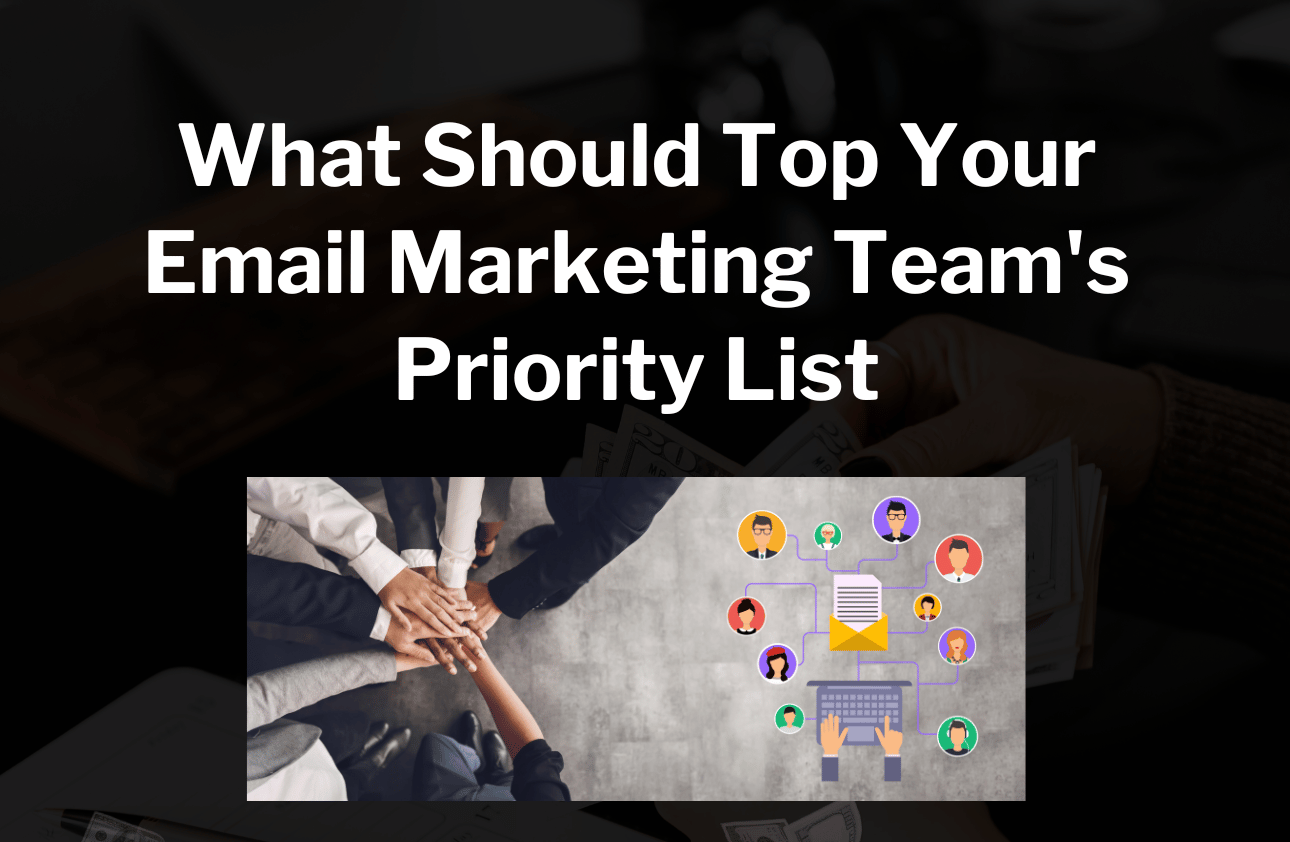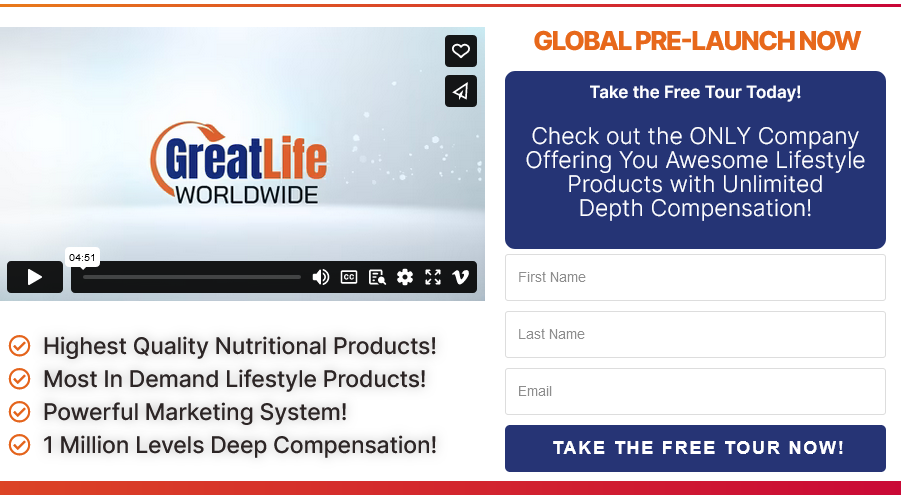What Should Top Your Email Marketing Team’s Priority List

Introduction to Email Marketing On A Team
Email marketing has long been a powerful tool for businesses to connect with their audience. In today’s digital world, where attention spans are shorter than ever and competition is fierce, it’s crucial for email marketing teams to prioritize their efforts wisely.
With so many tasks and responsibilities on their plate, where should they focus their energy? In this blog post, we’ll delve into the top priorities that should top every email marketing team’s list.
From building a strong email list to crafting engaging content and staying up-to-date with industry changes, we’ll cover it all. So sit back, grab your favorite beverage, and let’s dive into the world of effective email marketing!
Understanding the Importance of Prioritizing
When it comes to email marketing, understanding the importance of prioritizing is crucial for your team’s success. With so many tasks and responsibilities on their plate, it’s essential to determine what needs immediate attention and what can be addressed later.
Prioritization allows your team to focus their time and resources on the most impactful activities that will yield the best results.
By identifying high-priority tasks, you ensure that no valuable opportunities are missed or neglected.
One key aspect of prioritizing in email marketing is recognizing the significance of building a strong email list. Your team should prioritize growing your subscriber base by implementing effective lead generation strategies.
This could include creating enticing opt-in forms, offering valuable content upgrades, or running targeted advertising campaigns.
Crafting engaging and relevant content should also be at the top of your priority list. After all, nobody wants to receive boring or irrelevant emails.
Tailor your content to meet the specific interests and needs of each segment within your audience, ensuring maximum engagement with every send.
Email Segmentation and personalization play a vital role in optimizing your email marketing efforts.
Prioritize analyzing data about subscribers’ preferences, behaviors, demographics, purchase history – anything that can help you create highly targeted segments for more personalized communication.
This approach leads to higher open rates, click-through rates (CTRs), conversions, and ultimately boosts ROI.
Testing and measuring success is another crucial task that deserves priority attention from your email marketing team. Conduct A/B tests on subject lines, text design layouts, email timing, and CTAs.
Measure email metrics like open rates, bounce rate and conversion rates to continually fine-tune your campaigns based on actual data.
Investing time and resources in testing will help you optimize your strategy and ultimately drive better results
Finally, it’s important to stay up-to-date with industry changes.
Prioritize Keeping a breast of the latest trends, best practices, and technology advancements in email marketing.
Regularly Educate Yourself And Leverage Industry resources, webinars, blogs, and networking events to stay ahead forth.

The Top 5 Priorities for Email Marketing Teams
Crafting Engaging and Relevant Content
When it comes to email marketing, one of the top priorities for your team should be crafting engaging and relevant content.
After all, what good is an email if it doesn’t captivate your audience? To grab their attention and keep them interested, make sure your content is compelling, informative, and tailored to their needs.
Segmenting and Personalizing Emails
Another crucial priority for email marketing teams is segmenting and personalizing emails. Gone are the days of sending generic mass emails to everyone on your list.
Instead, take the time to divide your subscribers into different segments based on factors like demographics or past purchase behavior. This will allow you to send more targeted messages that resonate with each recipient.
Testing and Measuring Success
To truly optimize your email campaigns, testing and measuring success should be a top priority for your team. Experiment with different subject lines, layouts, calls-to-action, or even send times to see what resonates best with your audience.
By regularly analyzing metrics such as open rates, click-through rates, conversions, and unsubscribes – you can gain valuable insights into what’s working well and identify areas for improvement.
Staying Up-to-Date with Industry Changes
In the fast-paced world of digital marketing, it’s essential for email marketing teams to stay up-to-date with industry changes. New technologies emerge, consumer behaviors shift, and best practices evolve.
By keeping a pulse on industry trends and attending conferences or webinars, your team can adapt quickly and implement strategies that give you an edge over competitors.
Creating a Strong Email List
Finally, one of the most important priorities for any email marketing team, including a marketing cloud email specialist, should be creating a strong email list.
Focus on building quality leads rather than merely accumulating numbers. Offer incentives like free ebooks or exclusive discounts in exchange for subscribing to ensure that those who sign up are genuinely interested in hearing from you.
Regularly clean your list by removing inactive subscribers to maintain a healthy engagement.
As a marketing cloud email specialist, ensure seamless integration and utilization of marketing cloud technologies. Implement advanced features, optimize workflows, and leverage analytics within the marketing cloud platform to enhance the overall effectiveness of email marketing campaigns.
Stay updated on the latest developments specific to marketing cloud solutions to maximize the potential of these tools in delivering personalized, targeted, and impactful email content.
Creating a Strong Email List
Building a strong email list is crucial for the success of your email marketing campaigns. It ensures that your messages reach the right audience, increasing the likelihood of engagement and conversions. So, how can you create a robust email list?
Make sure to provide multiple opportunities for website visitors to subscribe to your emails. This could be through prominent sign-up forms on your homepage or dedicated landing pages.
Offer something valuable in exchange for their contact information. Whether it’s exclusive content, discounts, or free resources, ensure that there is an incentive for people to join your mailing list.
Next, leverage social media platforms by incorporating opt-in forms into your profiles or running targeted ad campaigns that capture leads directly from these channels.
Furthermore, optimize your website’s lead generation strategy by implementing exit-intent pop-ups or using gated content tactics where users must enter their email addresses to access certain resources.
Lastly but importantly, regularly clean and update your email list. Remove inactive subscribers and continually strive to attract new ones through ongoing marketing efforts.
By following these strategies consistently and adapting them based on audience feedback and industry trends, you’ll be well on your way to creating a powerful and engaged email list that yields impressive results!

Crafting Engaging and Relevant Content
When it comes to email marketing, the content of your emails is crucial. It’s not enough to simply send out generic messages; you need to create engaging and relevant content that will capture the attention of your audience.
So, how can you craft emails that stand out from the crowd?
Make sure you understand who your target audience is and what they’re interested in. This knowledge will help you tailor your content specifically for them.
Personalization is key here – use their names, speak directly to their pain points or desires, and show them why they should care about what you have to say.
Be creative with your subject lines. Your subject line is like a headline – it needs to grab attention and entice people to open your email.
Think outside the box and experiment with different approaches – humor, curiosity, urgency – whatever works best for your brand.
Next up: keep it concise! People are busy these days and don’t have time for lengthy emails. Make sure every word counts by getting straight to the point while still providing value.
Visual appeal also plays an important role in crafting engaging content. Use eye-catching imagery or videos that align with your message (but remember not everyone can view images so always include alt text).
Break up long paragraphs into shorter ones using bullet points or numbered lists for easy scanning.
Lastly but importantly: be consistent! Develop a unique tone of voice for your brand that reflects its personality and values across all email communications.
By following these tips, you’ll be well on your way to creating engaging and relevant content that resonates with readers – giving them a reason not only to be open but also take action after reading those emails.
Segmenting and Personalizing Emails
Segmenting and personalizing emails is a crucial aspect of email marketing that should be at the top of every email marketing team’s priority list.
By tailoring your emails to specific segments of your audience, you can significantly increase engagement and conversions.
Segmentation involves dividing your email list into smaller groups based on criteria such as demographics, behavior, or preferences.
This allows you to send targeted messages that are more relevant to each segment. Personalization takes it a step further by customizing the content of your emails based on individual recipient data.
When you segment your email list, you can create highly personalized campaigns that resonate with each group.
For example, if you have an online clothing store, you could send different promotions to customers who have previously purchased women’s clothing versus those who have only browsed men’s apparel.
Personalization goes beyond simply addressing recipients by their first name. It involves using data such as purchase history or browsing behavior to create dynamic content that speaks directly to their interests and needs.
By showing recipients that you understand them and are offering solutions tailored specifically for them, they are more likely to engage with your emails and take desired actions.
Effective segmentation and personalization not only improve open rates but also click-through rates and conversion rates.
When subscribers receive content that aligns with their preferences or needs, they are more likely to interact with it positively.
To effectively segment and personalize emails as a marketing cloud email specialist, start by collecting relevant data from subscribers through sign-up forms or preference centers within your marketing cloud platform.
Utilize the robust capabilities of the marketing cloud to gather not only demographic information but also behavioral data from previous interactions with your brand. Leverage the advanced features of the marketing cloud to categorize subscribers into meaningful segments.
Once segmented, craft compelling subject lines and personalized email copy for each group based on their unique characteristics or interests.
Dive into the specialized tools offered by the marketing cloud to enhance personalization further.
Consider incorporating dynamic elements such as product recommendations based on past purchases or location-based offers for local customers, leveraging the full potential of the marketing cloud’s capabilities.
Regularly evaluate the performance of segmented campaigns by analyzing metrics like open rates, click-through rates, sales conversions per segment, etc., using the analytics features provided by the marketing cloud.
This data-driven approach allows you to refine your strategies, adjusting content and targeting based on real-time insights.
As a marketing cloud email specialist, staying attuned to these metrics ensures that you can continually improve results and optimize your email campaigns for maximum effectiveness.

Conclusion:
In the ever-evolving world of email marketing, success hinges on strategic prioritization. By focusing on crafting engaging content, segmenting and personalizing emails, testing and measuring success, staying updated with industry changes, and creating a robust email list, marketing teams can navigate the digital landscape with confidence.
The journey towards effective email marketing is an ongoing process of adaptation, learning, and refinement.
As a marketing cloud email specialist, integrating advanced features and staying informed about marketing cloud solutions further enhance the potential for personalized and impactful email campaigns.
Prioritize wisely, adapt proactively, and watch your email marketing efforts yield optimal results in the competitive digital arena.
With our kindest regards,
Jon Weberg
Richard Weberg

